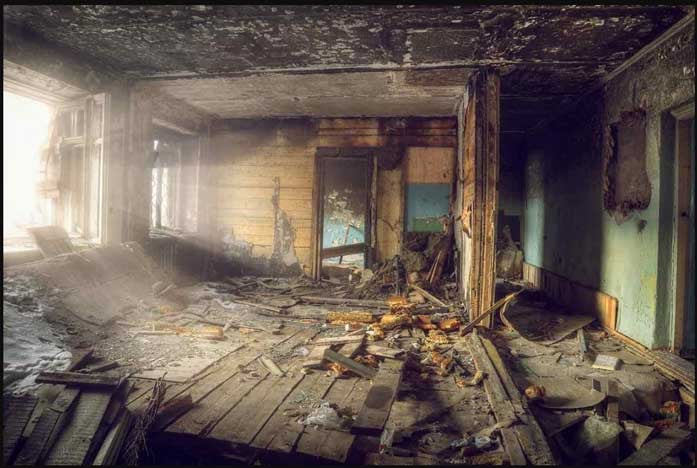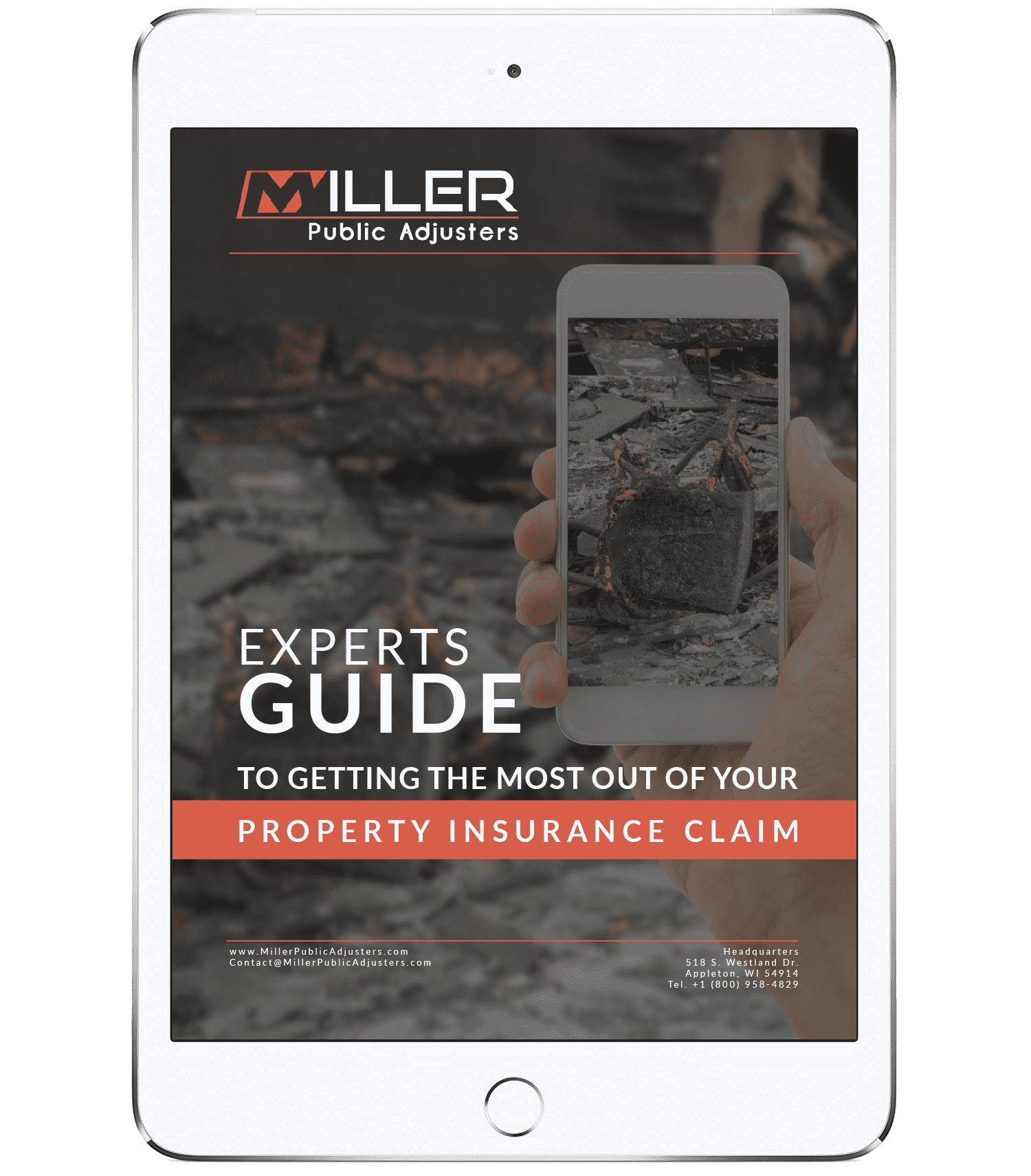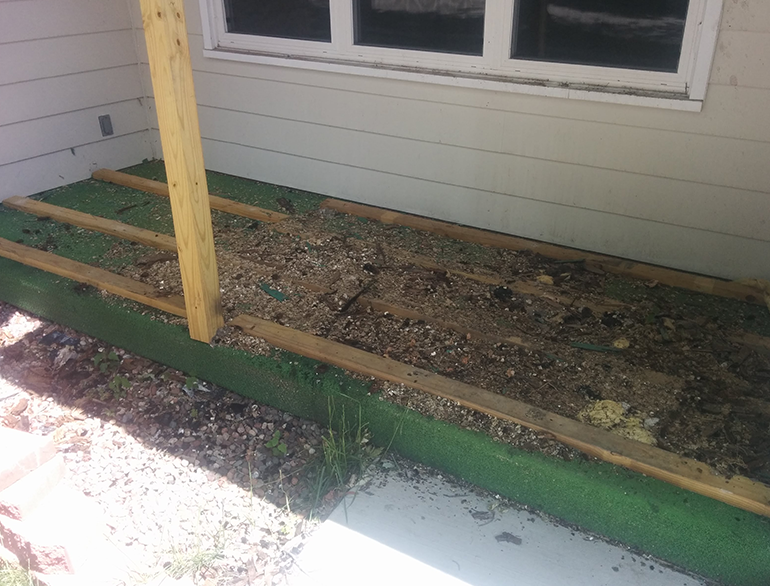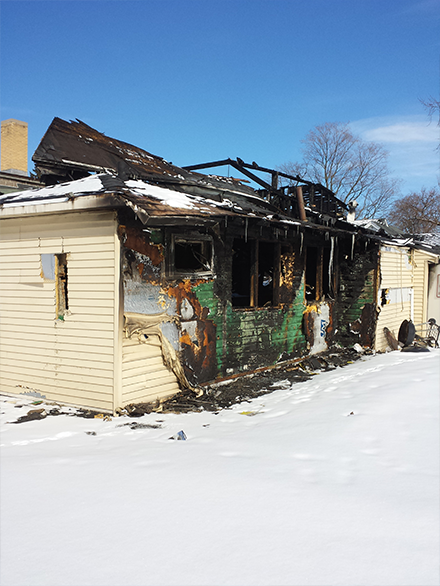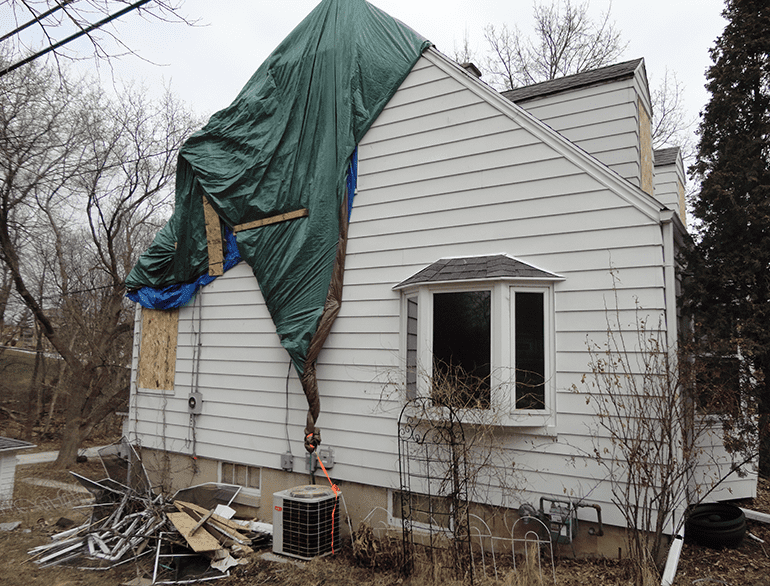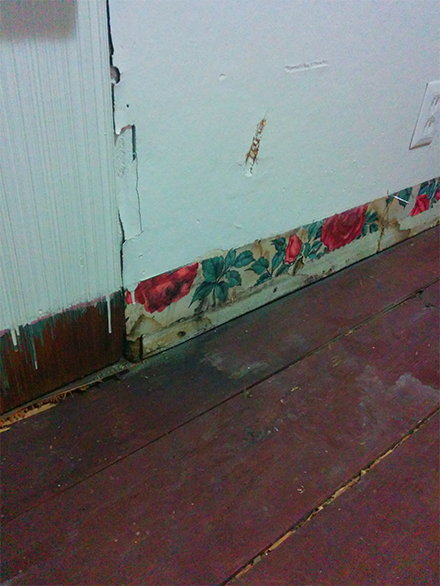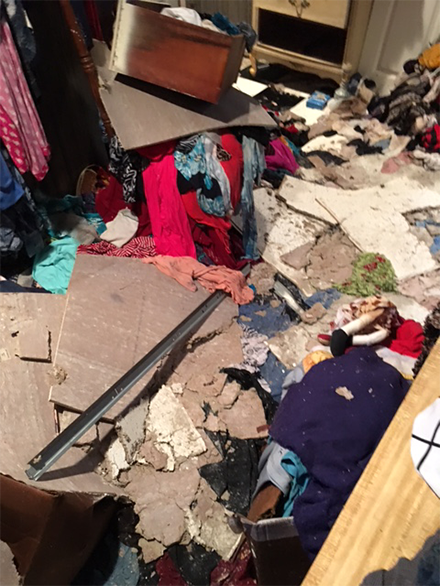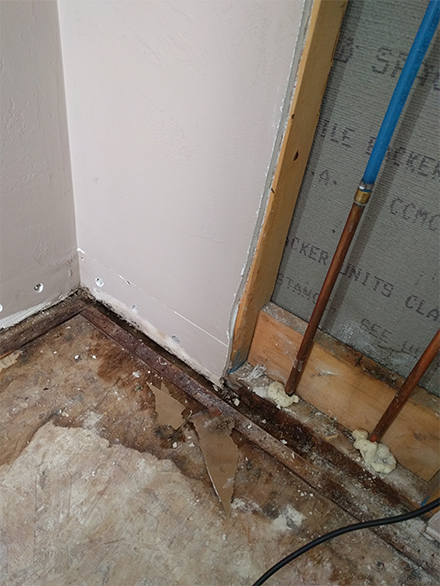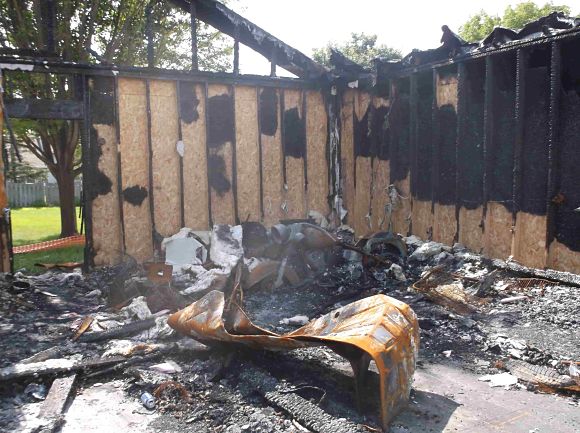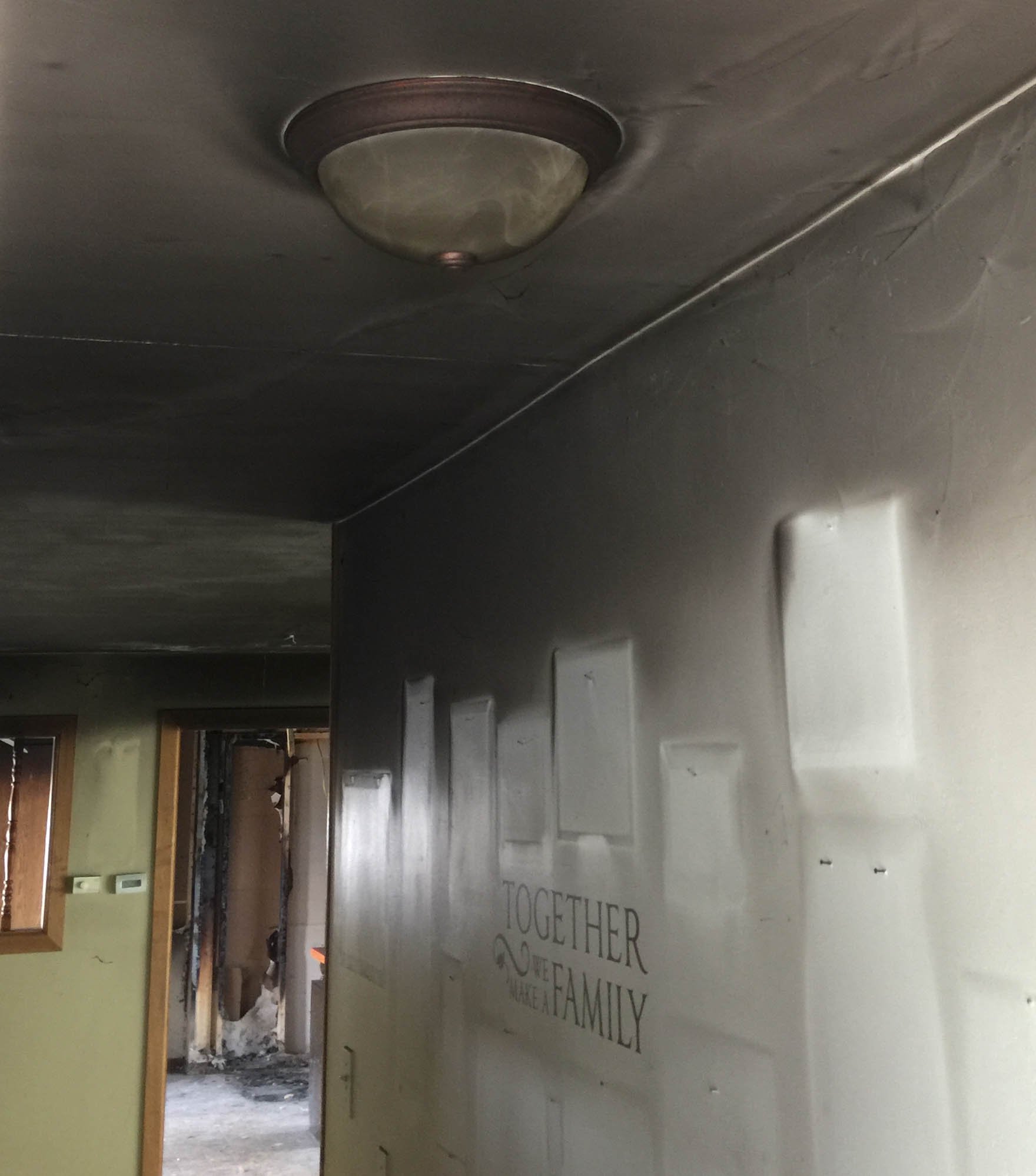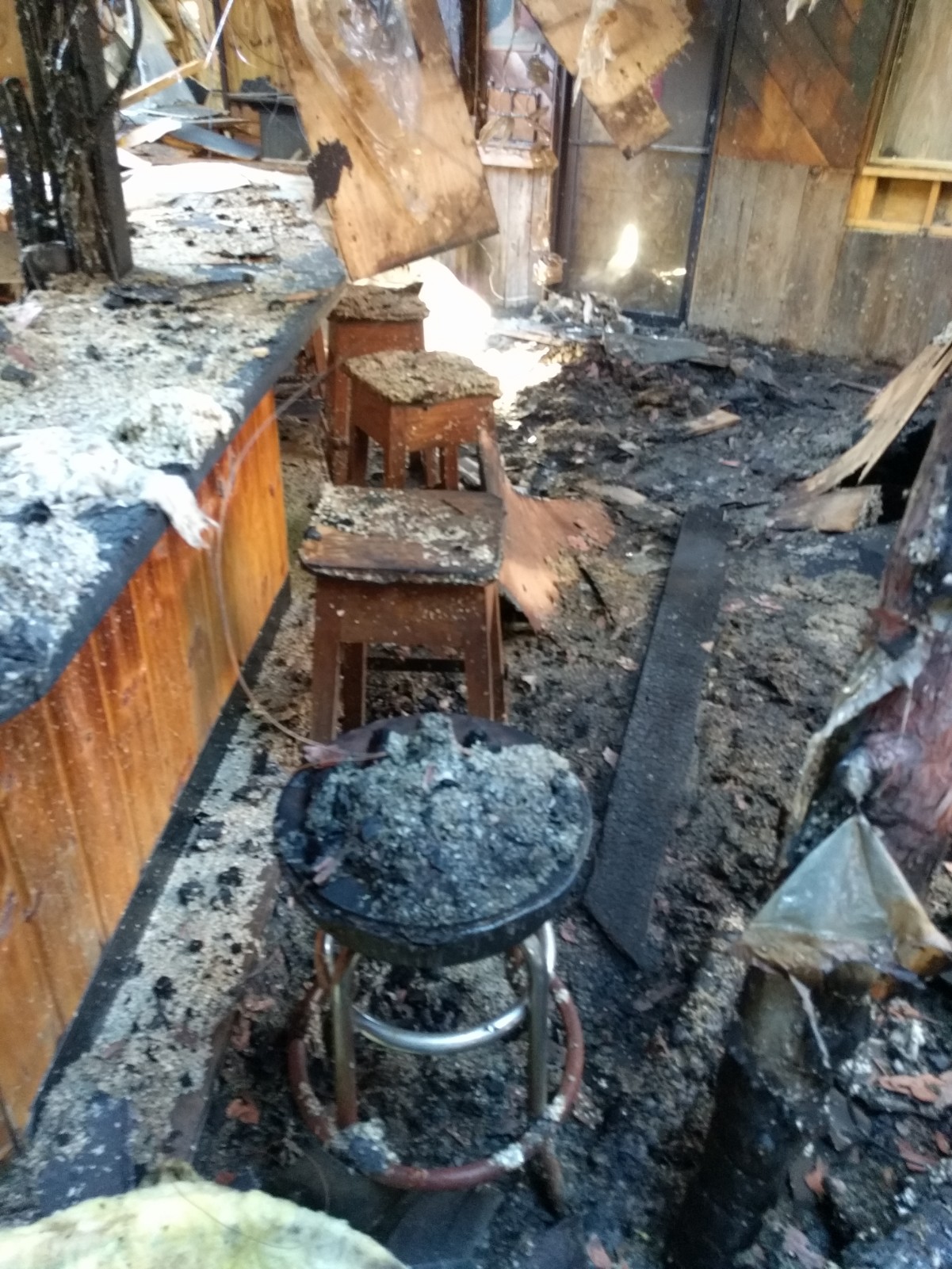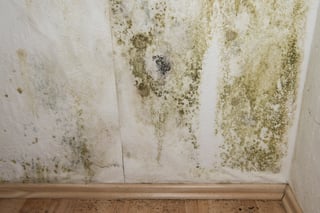
Household mold is insidious, whether the byproduct of a poorly ventilated bathroom or the silent reminder of a burst plumbing pipe or rising flood waters entering your home. While not always immediately apparent, if a situation occurs where mold growth is suspected it should be identified and eliminated as soon as possible. If the cause is something not covered by homeowners insurance, such as a leaking basement faucet that's gone unnoticed for too long, you may want to take care of the problem yourself. There's plenty of online help available for how to best accomplish this. Here's a good resource.
Mold Growth
One area of your home where mold is most likely to be found, especially after experiencing flood damage or water damage from a broken water pipe, is the basement. Mold can, however, grow virtually anywhere organic materials are found. It grows from spores that are always present in our environment but are usually in an inactive state. What these spores need in order to become active is high humidity (70% or more) and a temperature of at least 65°.
Mold spores are easily spread, carried by air currents, and in their inactive state usually appear as a dry white powdery substance. Once activated by humidity and temperature, mold will appear fuzzy or slimy and may be orange, green, purple or black. Activation typically occurs within 48 hours or less and can quickly become destructive to both your material possessions as well as your health. Individuals with allergies, asthma or other breathing problems are especially susceptible, as well as the very young and the elderly.
Toxic black mold will commonly begin to grow in a basement after flooding because this area is difficult to dry out completely due to lack of sunlight, poor ventilation and basements typically being humid environments. If you've experienced water damage that's covered by your homeowners insurance policy it's important to address this situation promptly, but not until your insurer has been notified of the situation and given you the go ahead to begin cleanup. Here's some useful information to consider before beginning the cleanup process.
The ventilation or airing out process can be started immediately and any excess water should also be removed. If mold has affected possessions such as books, photographs, clothing, etc., these can be exposed to brief periods of sunlight to help arrest the mold growth. Photos or videos should be taken of all suspected mold damage as evidence to be used with your insurance claim. Some items may be able to be saved if properly treated but others will need to be discarded. Don't throw anything away, however, until it's been inspected by someone from your insurance company. In the meantime, these items may be stored in plastic bags.
A Professional Advantage
As public adjusters we see lots of cases where dangerous mold isn't in evidence to the untrained eye but can still cause major problems if not identified and eliminated quickly and completely. Places like behind the sheetrock and in wall insulation are two favorite places for mold to develop. These spaces are dark, humid and unventilated and, since they're out of sight, they may not show up on your insurance company's claims damage report either.
These mold problems need to be remedied as quickly as possible and, in most cases, are best handled by a professional mold remediation company. Make sure your insurance carrier gets the full picture of the damage your home has suffered and that the claim payment amount covers it all. If in doubt, consider the services of a qualified, licensed public insurance adjuster.
Miller Public Adjusters currently serves the states of
Wisconsin - Florida - Illinois - Indiana - Michigan - Minnesota - Texas
Call us 24 hours a day at (800)958-4829 to schedule an appointment or
please fill out a Free Claim Review to see if we can help.
.png)


